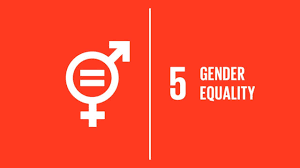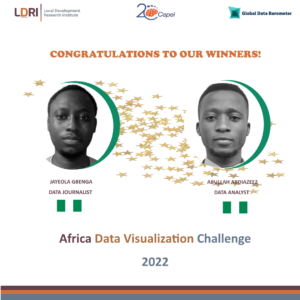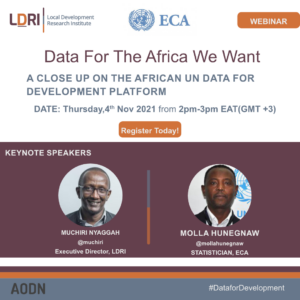![]()
Bringing Open Data to Bear on Gender Inequality in Africa


The worldwide push for gender equality has and continues to gain momentum to bridge existing and emerging gaps that continue to perpetuate inequality. Beyond the moral incentive there exists a huge development incentive for gender equality. In Africa alone, the exclusion and or ineffective participation of women and girls in development processes sets back the continent $US95 billion a year. True meaningful development can therefore only be realised through active engagement of women and girls and equal access to the building blocks for structural transformation from inclusive financial services, healthcare, education, political participation to peace to security.
The sustainable development goals (SDGs) foreground a worldwide blueprint for bridging gender inequality under Goal 5 on gender equality and women’s empowerment. In the African continent the inclusion of women and women’s rights are anchored in the Protocol to the African Charter on Human and Peoples’ Rights on the Rights of Women in Africa also known as the Maputo protocol. These two therefore inform efforts and interventions by both government and women’s rights organizations towards bridging gender inequality in Africa. These interventions however need to be informed by evidence to be effective, which underscores the importance of availability of data and other forms of evidence on all aspects of development as spelt out both in the SDGs and the Maputo Protocol. More importantly, the availability of gendered data which refers to data disaggregated by sex as well as data on issues affecting women and girls exclusively or primarily.
However, its not just about availability. How open the data is, matters. By openness of data we mean the extent to which the data publisher has explicitly allowed for it to be freely used, re-used, repurposed and/or redistributed by anybody anywhere anytime.
The Gendered Open Data Project
As the community in Africa continues to push for implementation of the Maputo Protocol and interventions to accelerate progress on the SDGs, we found ourselves asking where the open data on this can be found. Is the evidence (in this case open data) needed to inform our work as non-state actors as well as the work being done by colleagues in the public sector available, appropriately disaggregated and open? This is what we set out to discover through the Gendered Open Data Project.
Our research focused on one aspect of gendered data which is sex disaggregation and refers to data collected and tabulated separately for women and men. Inequality’s nuances are most often lost when data is presented generically for whole populations and not disaggregated by sex. This is vital for the measurement of variations between women and men in various dimensions and monitoring progress towards achieving gender equality.
We looked at the availability of sex disaggregated open data in the 19 Anglophone African countries through an SDG lens primarily focused on goal 1-5. Under goal 1-5, we identified tier 1 and 2 indicators and excluded tier 3 indicators as they do not have internationally established methodology or standards. The identified tier 1 and 2 indicators were then further filtered on whether or not they could be sex disaggregated excluding indicators could not be disaggregated such as indicators addressing agriculture and more specifically plants. The final list of indicators that met this criterion and were then used as data categories were 50 indicators which address 33 SDG targets.
We then searched for data related to the data categories and indicators on the national statistics office and other official government agency websites as our primary sources and websites of multilateral agencies as secondary sources.
The available data was then assessed against 5 elements that evaluated data availability, sex disaggregation and openness of the data i.e. whether or not the data was presented in machine readable formats and whether the data was licensed appropriately to explicitly allow, reuse, repurposing and redistribution. Each indicator was then scored against the 5 elements with the possibility of a maximum score of 300 for each country.
Our Findings
From all data categories across all 19 countries, 75% of the data was available with SDG 2 having the most data available.
Of the available data, 70% could be found on in-country websites i.e. websites of national statistics offices or websites of official government agencies, 30% from websites of multilateral organizations such as the World Health Organization.
Additionally, from the data collected South Africa has the most data from in country websites at 88% with Cameroon having the least amount of data available from national sources at 42% with 58% of its data sourced from websites of multilateral organizations.
The 50 indicators were divided into 24 indicators that explicitly required sex disaggregation i.e. required the data to be presented differently for men and women and 26 that did not but would (in our view) be very useful if they were. 55% of all available data across all indicators is sex disaggregated with goal 5 on gender equality and women’s empowerment being the goal with the most sex disaggregated data. It is however important to note that all indicators under goal 5 inherently require sex disaggregation.
76% of data categories that explicitly required disaggregation were sex disaggregated with only 36% of data categories that did not explicitly require disaggregation being sex disaggregated. Malawi had the highest amount of data that is sex disaggregated for categories that require explicit disaggregation at 71% with The Gambia having the highest amount of data that is sex disaggregated for categories that do not require explicit disaggregation at 47%. With the exception of Cameroon, all other countries sex disaggregated over 50% of data for categories that required sex disaggregation.
On data formats, 88% of the data was presented in machine readable formats and or PDFs with The Gambia having the highest amount of data presented in machine readable formats or PDFs at 96%. A further breakdown shows 72% of the data was presented as PDFs with only 16% presented in machine readable formats such as CSV and JSON.
Finally, 55% of the data had a terms of use attached to them whether or not they were restrictive. Of these, 99% had semi-restrictive clauses attached to them that allow conditional reuse, redistribution or repurposing of the data and only 1% of this data had overt permissions that allowed reuse, redistribution or repurposing of the data.
Generally, countries have made an effort to make data public and available on their websites with all countries scoring above 50% for availability of the data at the country level but with gaps that still to be filled to make data more available at the country level. While countries have made strides in disaggregating data for indicators that explicitly require disaggregation with an average score of 76%, they is still room to stretch our ambition especially in regard to indicators that do not explicitly require sex disaggregation but would be valuable if they were. At present, 36% of those indicators are disaggregated. Where licensing of data and information is concerned, governments and multilateral institutions need to take a more deliberate approach in order to eliminate terms of use that are restrictive. With only 1% of the data being explicitly licensed to allow for reuse, repurposing and redistribution, the space to innovate with the data without risk of prosecution remains high. It makes publishing of the data somewhat counterproductive because even though it exists and can be found, optimal utilisation is inhibited.
On a positive note however, a lot of data is presented in either machine readable formats of PDFs. While this report makes an exception for PDFs because of their provision of context to help understand the data better, the very high percentage of data presented as PDFs is problematic. Governments should consider publishing the data used in their reports as separate machine readable files (in formats such as JSON or CSV) so that anyone interested can download and process the data in ways they find meaningful.
We hope that through this project we will provide stakeholders with a picture of the availability, disaggregation and openness of gendered data in the countries we examined. We believe efforts to end gender injustice in Africa will only be successful if, in addition to leadership, political will and resources, we ensure the evidence to inform interventions is available in forms that enable everyone to get the job done.




